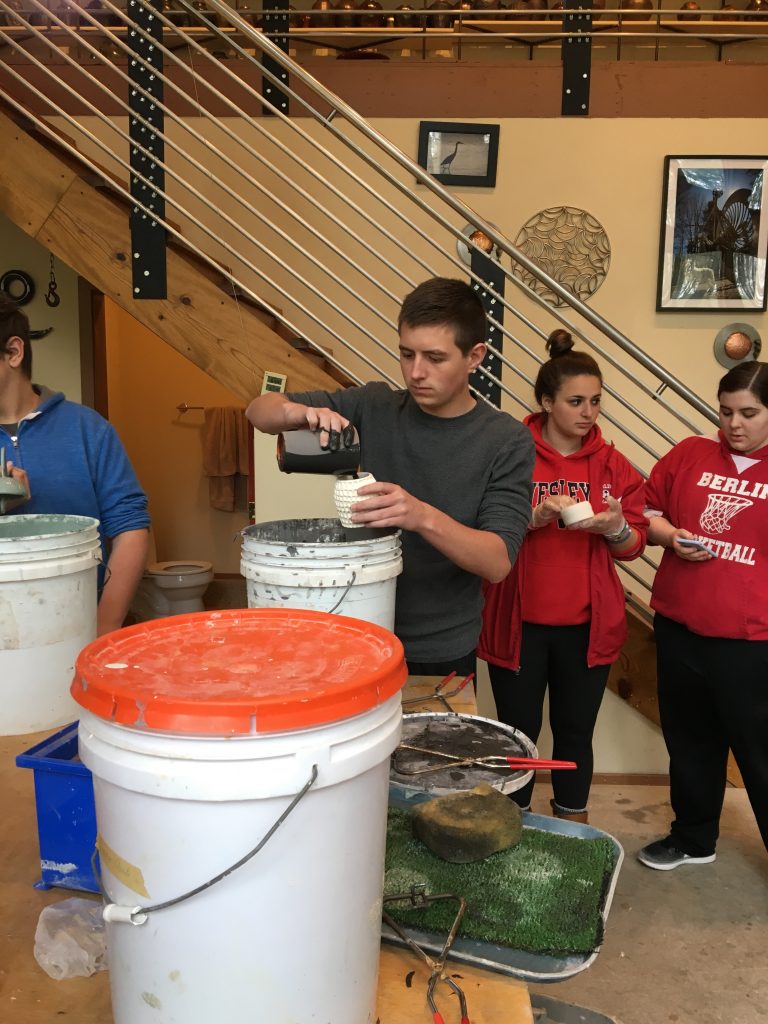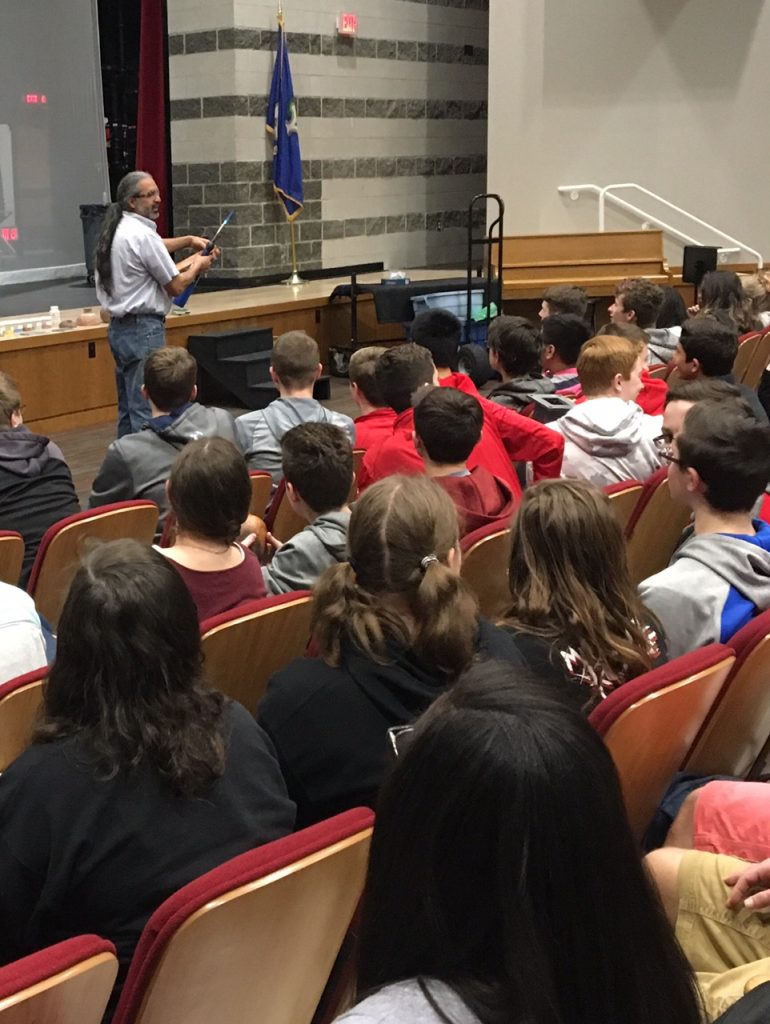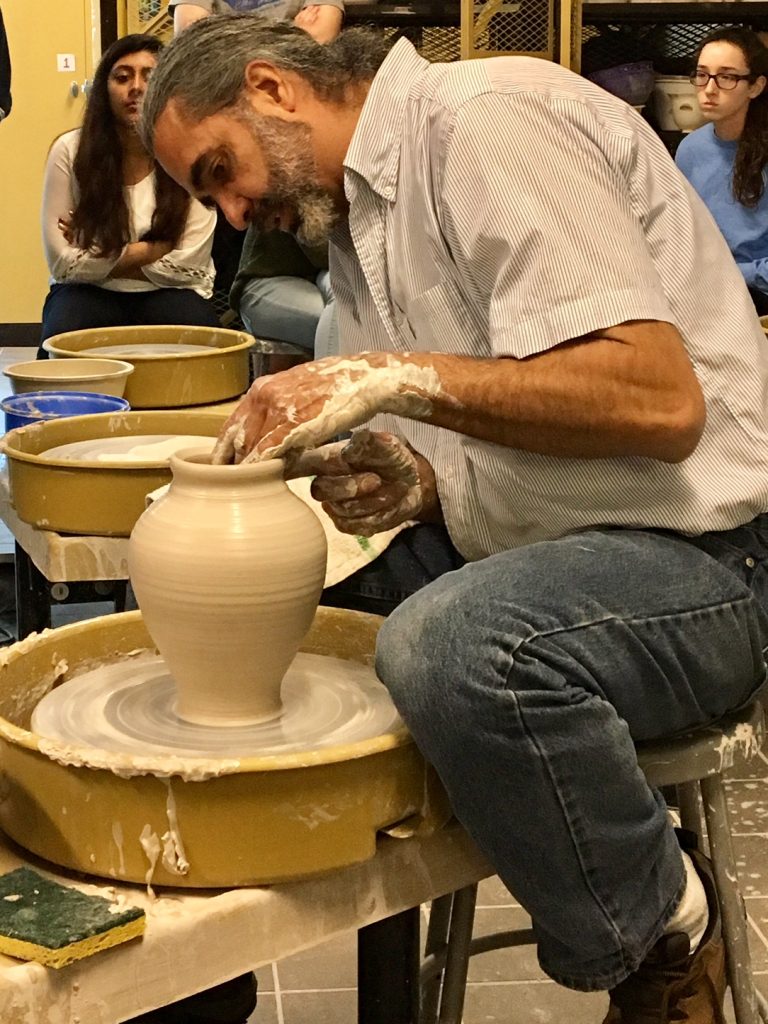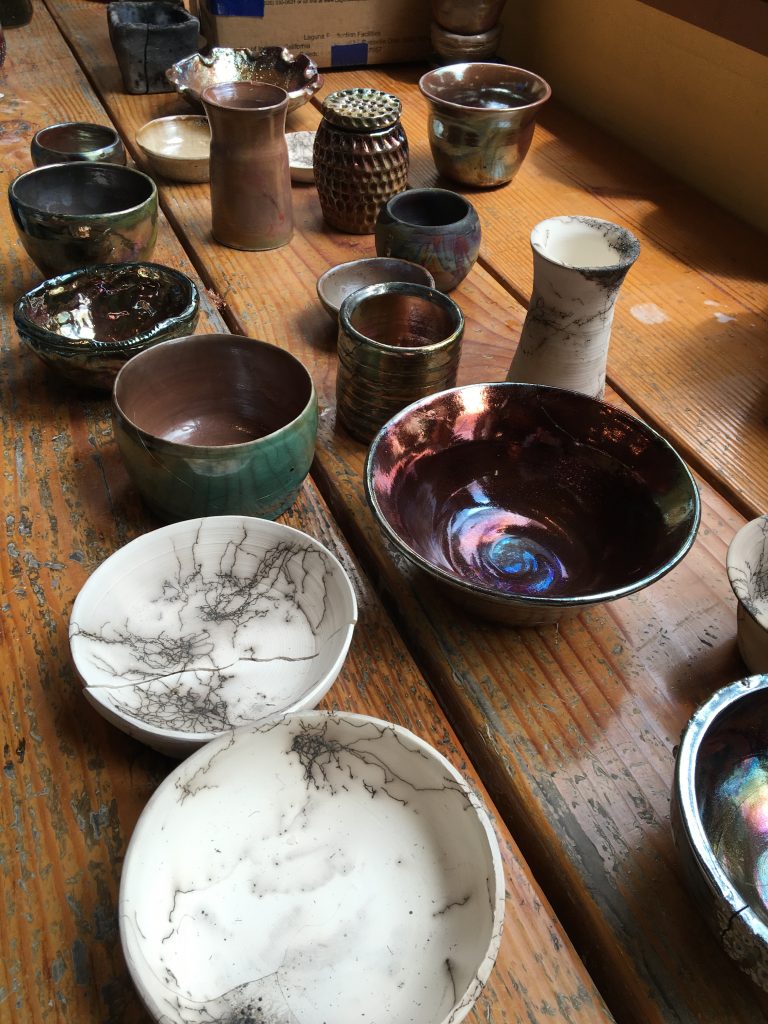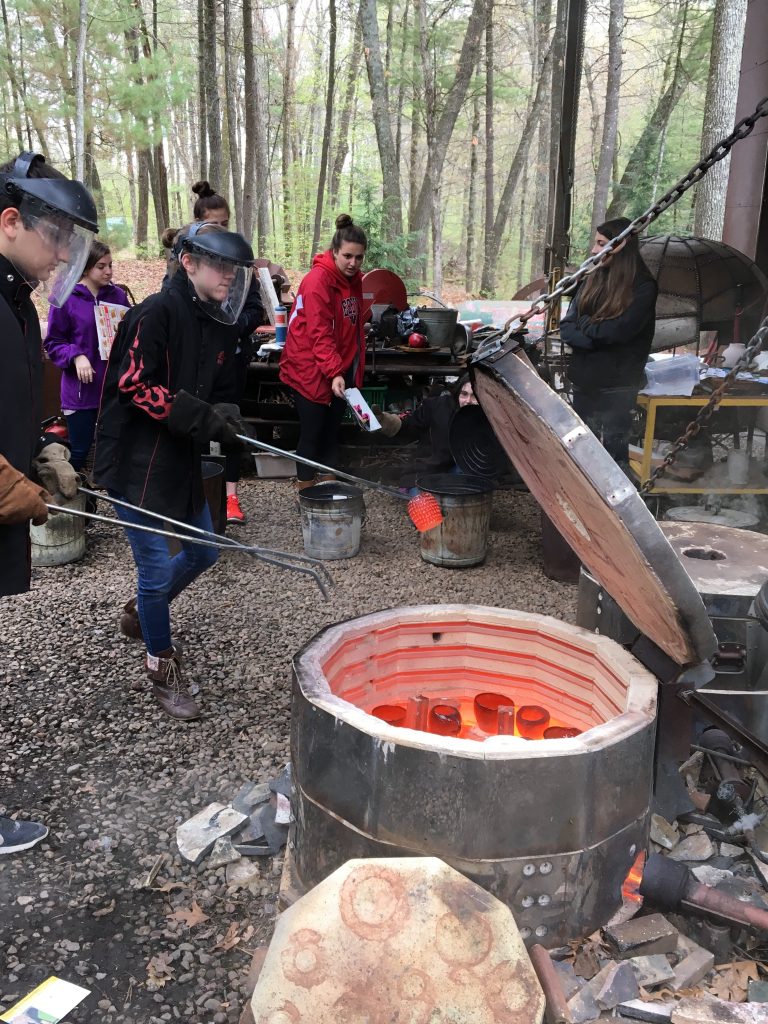The first ever Bowl Olympics was held to prepare for and promote the Empty Bowls Fundraiser. Students and staff competed in 5 events on the pottery wheels, including Widest, Fastest, Blindfolded, Most Creative and Best Overall. At the end of each event, the bowls were judged and the winners were awarded necklaces with tiny pots as “medals”. Almost 40 bowls were created within 2 hours!
Category Archives: Pottery
Local Artist Presents to Chemistry and Pottery Classes
Local artist, Vicente Garcia, recently visited BHS and spoke to Chemistry and Pottery students. Mr. Garcia is an established Sculpture and Ceramic artist as well as Full Professor at Central Connecticut State University. Through an in-depth presentation, over 100 students learned of the vast connections between the two disciplines. Mr. Garcia spoke about the mineral make-up of clay and glazes, and discussed how the manipulation of these components can be utilized to create varied effects and finishes. Reduction, oxidation and combustion reactions play an important role in the firing process and the outcome of ceramic artworks.
After the presentation, Mr. Garcia visited the Pottery classroom and demonstrated his impressive skills on the pottery wheel. On April 7th, a group of students will take a field trip to his Simsbury studio to participate in an Alternative Firings Workshop where they will get hands-on experience and continue to form meaningful connections between the Arts and Sciences.
Alternative Firings Workshop
On May 6,2016, Mrs. DeSorbo’s Pottery I, II and III students took a field trip to the studio of artist Vicente Garcia. Garcia is the ceramics professor at Central Connecticut State University as well as a nationally recognized ceramic and sculpture artist. Throughout the day, students participated in an Alternative Firings Workshop where they had the opportunity to finish their pieces using smoking techniques and the Raku process. Raku refers to a type of firing that was developed in Japan in the 16th century. Within in this process, the pieces are loaded into a hot kiln and heated until the glaze is molten. Then the pieces are transferred into a metal can filled with combustibles. The carbonaceous atmosphere causes a reaction, creating unique effects with the glazes. Students were also able to use slips, copper and hair to finish their work.
